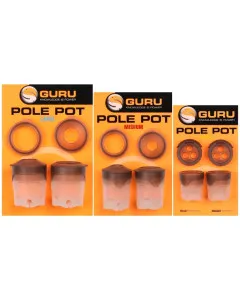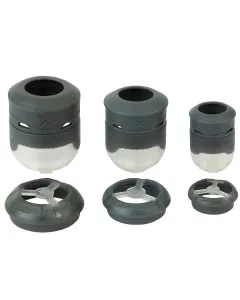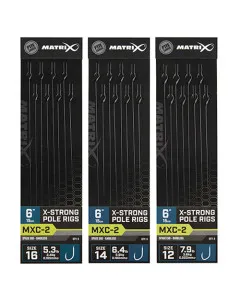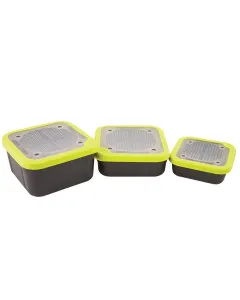Match Masterclass - Complete Guide to Soft Pellet Fishing
This entry was posted on by Steven Crowe

As we move into spring, there comes a key turning point when pellets become the go-to bait for match anglers. After months of fishing with maggots and bread, it feels great to have the sun shining, the water warming up, and the fish waking up to more active feeding patterns. In this month’s Match Masterclass, I’m going to take you through my take on soft pellet fishing, covering everything you need to know, from finding the right depth to bait prep and some more advanced feeding adjustments that will help you get the most out of your spring session.
Not too deep, not too shallow.
I always make sure to plumb the depth correctly. In this session, I’m fishing fairly shallow, not quite in the margins but definitely avoiding the deepest areas. Without wanting to turn this into science class - colder water actually sinks to the bottom of the lake. When the sun is just starting to warm things up the fish often move up into the mid depths to avoid the coldest water that accumulates in the deepest areas. The margins, being crystal clear this time of year, don’t provide enough cover for the fish to feed comfortably so there is a goldilocks-zone to be found on gradual drop offs where the fish are likely to be holding.


Sensitive rigs and monitoring the swim
In a real fishing situation, I always dot the float down as much as possible, making it ultra sensitive so I can see every little indication. Early in the season, fish aren’t quite as aggressive as they will be in summer, when they tend to sail the float away. Instead, bites are subtler, so a sensitive setup is really important.
One of the other most important aspects of soft pellet fishing is managing the number of fish in the swim. While it might sound strange, having too many fish feeding at once can actually cause issues, leading to liners and the risk of foul hooking.


Spring bait essentials
Prepare your pellets
For this session, I prepped my pellets to be extra sticky. I do this by placing them in a bag and adding water and a Sticky Pellet Syrup, the F1 Sweet flavour would be a great choice because it matches the pellets but the most important thing is that the syrup helps the pellets get more sticky, making them more durable and ensuring they stay on the hook better.
Rather than pumping the pellets, I tightly seal them in a plastic bag to let them absorb the liquid naturally. Once they’ve softened, I like to add additional colours and flavours to my hook baits to make them stand out in the swim, yellow and red are my top choices. I use Dynamite Flavour Shots and Shake & Catch to enhance the bait’s attraction.


How to feed and manage the session
The fishing was so good in this session that I didn’t need to change anything at all. However, for demonstration purposes, I wanted to show what I would do if too many fish entered the swim, potentially leading to strange bites, liners, and foul hooking.
The trick is to slow things down, I remove the sprinkle lid from my bait pot and change my feeding technique. Instead of tapping in pellets with noise, I dip the pot into the water and tip it upside down, allowing the pellets to fall in silently. This helps keep fish feeding steadily on the bottom rather than rising up in the water column and does not cause a rush of fish due to the sound of the pellets trickling into the water.
Too much feeding noise can encourage fish to move up and feed erratically, making it harder to get clean bites. By eliminating that noise, the fish are more likely to stay where they should, feeding confidently on the deck.


Pellet Rig essentials
Final Thoughts
To wrap up, I want to emphasize that there aren’t too many variables in fishing, but one of the biggest differences between good anglers and great anglers is how they feed. Understanding how to control the swim and adjust feeding tactics can make all the difference when trying to catch big weights.
We managed to catch a good number of smaller carp up to maybe just under 4lb and a lovely Ide for good measure. Oh and of course, as luck would have it, I lost a big Carp right at the end!
That’s fishing for you… Stay tuned for the next Match Masterclass, and Until then Tight Lines!!















